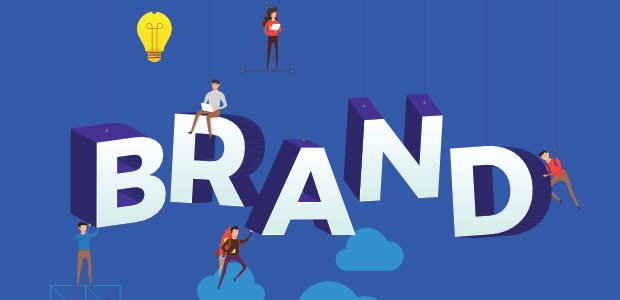Are you working on building your brand but struggling to connect with your audience? Gone are the days when you can build a brand on a killer logo and a catchy slogan.
Now, people expect a little more.
Brand authenticity is one of the biggest predictors in how well your clients respond to your messaging.
So, in this article, we’re going to address the following questions:
- What is brand authenticity?
- Why is brand authenticity important?
- What are a few examples of strong brand authenticity?
- How can you build a brand that customers love and trust?
By the end of this post, you’ll see just how easy it is to create brand authenticity to connect with your audience and nurture your leads.
Let’s get started.
What Is Brand Authenticity?
If you’re a small or medium-sized business, you likely know the importance of your company’s branding. Or perhaps you’re an entrepreneur, and you recognize the impact your personal branding has on your overall business.
Either way, statistics show that a strong brand is crucial for today’s marketplace:
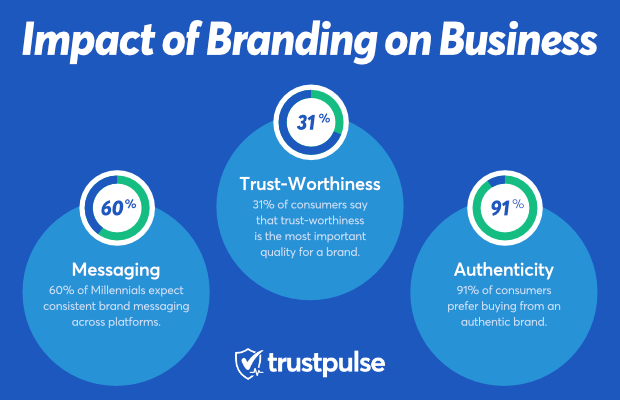
- 60% of Millennials expect consistent brand messaging across platforms.
- 31% of consumers say that trust-worthiness is the most important quality for a brand.
- 91% of consumers prefer buying from an authentic brand.
And when it comes to what makes a strong brand, you may be noticing a common theme within the stats:
Companies with an authentic brand are trusted more and get more sales than companies perceived as being inauthentic.
But that begs the question: What does it mean for a brand to be authentic?
The answer is simple:
Your brand’s authenticity depends on how closely your company’s internal values align with the creation and distribution of your product. It also requires building an open, honest, and transparent relationship with your customers.
In a moment, we’re going to look at why brand authenticity is so necessary for running a successful business today. But for now, let’s break down this brand authenticity definition into its two parts.
Internal Values and Product Creation

One of the things that customers look for when it comes to a brand’s authenticity is how closely their product’s creation and distribution aligns with their company’s internal values.
For instance, if a clothing company were to claim that they value environmental issues and workers’ conditions, but consumers later discovered that the clothes were made by underpaid child laborers, consumers would lose trust in that brand.
Why? Because the values don’t align with the actions.
Believe it or not, this happens quite a bit.
H&M suffered a brand crisis back in 2016 when c discovered they had factories in Myanmar, Bangladesh, and Cambodia. Journalists found children as young as 14-years-old working up to 12 hour days in poor conditions.
Not to mention, all the workers were severely underpaid.
Over the next few years, H&M’s brand image suffered, and sales dropped lower than they had in over a decade (down 62% in the first quarter of 2018).
Since that time, they’ve made various efforts to reshape their brand’s image, but doing so is always an uphill battle.
Internal Values and Customer Relationships

The second aspect of brand authenticity is how a company chooses to build relationships with their clients.
For customers, openness is crucial. When a client enters a relationship with a business, they expect a certain amount of mutual trust. They want information that’s honest.
It’s why companies that rely on fake social proof never fully recover when caught.
But customers also want to know the information they give is valued.
When a client hands over a piece of their personal information (like an email address), they expect this to stay private unless told otherwise in a reasonably obvious way.
You may recall a few years ago when Facebook faced significant backlash for selling user data to companies such as Amazon, Apple, and Netflix. While Facebook maintained they didn’t give out any data without permission, most Facebook users left the platform feeling somewhat violated.
Yes, the fine print had indicated that user information might be shared. But it was very fine print.
As a result of this and other scandals, Facebook’s brand authenticity is less than pristine.
Again, a brand’s authenticity ties directly to how it lives up to its values on the product creation side and the customer relationship side. Both are needed to build a strong brand that your clients trust.
But, hey, it’s just business. Does it matter if my brand is authentic so long as I am delivering a product people want?
*Spoiler Alert: Yes. It matters quite a lot.*
Why Is Brand Authenticity Important?
More than ever, brand authenticity is necessary for your company’s success. A large part of that is due to social media and the spread of information.
Think about it.
30 years ago, before the internet, a brand’s communication with its customers was pretty limited. Most people were more concerned with a brand’s products than its values.
So if a company made a vacuum cleaner that worked amazingly well, most homeowners didn’t ask the door-to-door sales rep how environmentally friendly it was.
But oh how the times have changed.
With the internet came wide-spread communication. And one of the many benefits of that?
Consumers could start holding companies accountable for more than just their products’ performance.
On the flip-side, companies could take the offensive and more easily share the values their brand stood for.
A business could also use its content to educate consumers on what goes into building their products.
With this give-and-take style of communication, deeper relationships can grow between company and consumer.
But now, these relationships aren’t simply nice for companies to have. They’re absolutely necessary.
And one of the biggest aspects of building that relationship? Honesty and transparency:
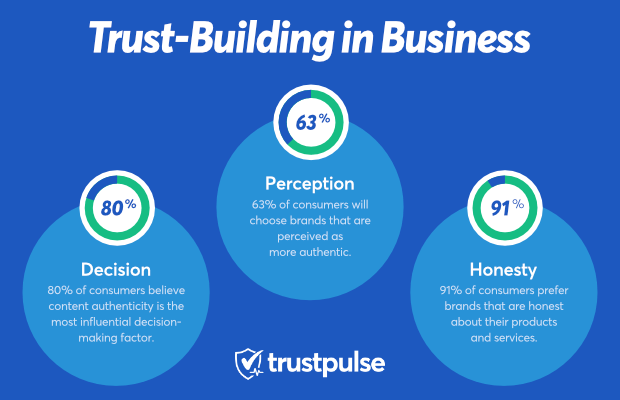
- 80% of consumers believe content authenticity is the most influential decision-making factor.
- 63% of consumers will choose brands that they perceive as more authentic.
- 91% of consumers prefer brands that are honest about their products and services.
If you’re looking to grow your business, there’s no escaping the importance of building positive relationships with customers. How do you make that happen?
Let’s look at three brand authenticity examples before analyzing exactly how you can build an authentic brand for your business.
Three Examples of Authentic Brands
1. Dove
Dove is an excellent example of a brand that has grown into its authenticity. On its homepage, Dove makes its values clear:
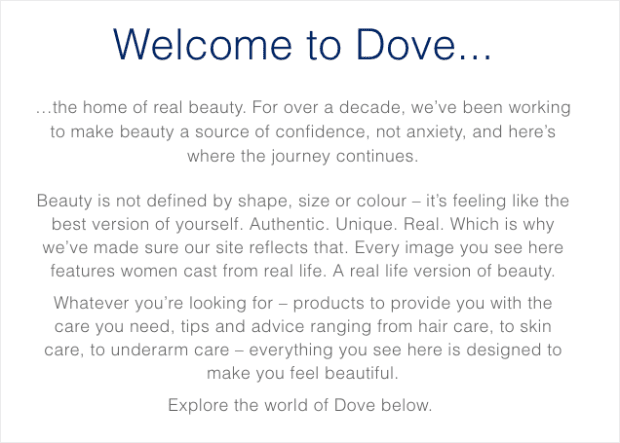
Let’s look at their core value:
“Beauty is not defined by shape, size or colour – it’s feeling like the best version of yourself. Authentic. Unique. Real.”
This refreshing dose of honesty is demonstrated time and time again with their internationally known advertising campaigns:
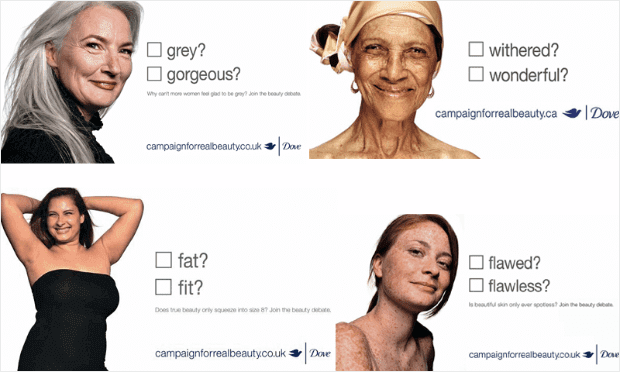
They are unafraid to feature models who don’t fit any “stereotypical” expectations. Instead, they challenge the definition of beauty and stand firmly by their beliefs.
As a result, they have some of the most engaging campaigns in the world.
Dove’s values also show through their social media platforms. Just check out their description on Twitter:
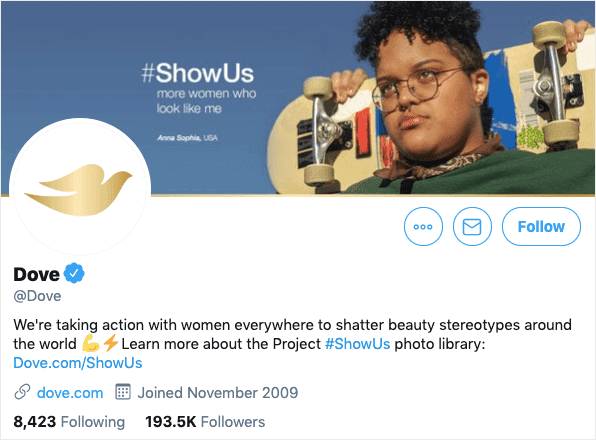
Their goals as a company are clear: reshape what it means to be “beautiful.” In doing so, they even encourage users to post real photos for their website with their “Show Us” campaign:

This campaign not only reinforces the brand’s commitment to living out their values, but it also encourages regular clients to engage with the brand in a meaningful way.
When it comes to brand authenticity, Dove is at the top of the game.
2. MFCEO
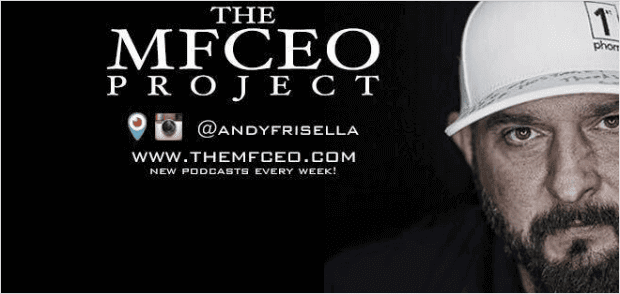
Whether you love him or hate him, Andy Frisella probably doesn’t care.
Now, please note, OptinMonster doesn’t endorse Andy Frisella or his style of rhetoric. His swearing rants can be off-putting for some, but it’s important to remember he’s speaking to a specific audience who are receptive to that style of speaking.
And when it comes to building an authentic brand, we’d be lying if we said he didn’t belong on the list.
Andy Frisella is the owner of 1st Phorm, a nutritional supplement. However, as he amassed his wealth and built other companies into 9-digit figures, his brand grew massively.
His mission? To encourage entrepreneurs to find success through the grueling hard work it takes to achieve it. And he doesn’t step around that fact lightly.
This mission shows through his podcast, MFCEO episode 304:

In the episode description, Andy shares his values of spreading hard work:
“…I can’t stop caring, & I won’t stop working to make sure that the people who really, truly want to succeed know the hard truth about what it’s going to take to do that.”
In a world of “get-rich-quick” gurus, many people found Andy’s honest approach to entrepreneurship a refreshing change of pace.
So much so, that his podcast was the #1 ranking podcast in the categories of Business, Entrepreneurship, and Personal Development for several years in a row.
For that reason, Andy Frisella gets credit for saying what he believes and building an authentic brand.
3. Burt’s Bees
If you’ve ever had chapped lips, you’ve likely bought Burt’s Bees lip balm. And you probably loved it.
That’s because Burt’s Bees is committed to using only the best organic ingredients to create their products. And they aren’t shy about that fact.
At the heart of the company was a young man with a large beard selling honey on the side of the road. When that young man (Burt Shavitz) met Roxanne Quimby, everything changed. The two fell in love and made different products like candles and skin balms.
Eventually, the pair split up, and Clorox Corporation bought the company (to the tune of $925 million).
That said, the buyout didn’t harm the brand’s grassroots dedication to openness. On their website, they still tell you how natural their products are (which average at 99%):
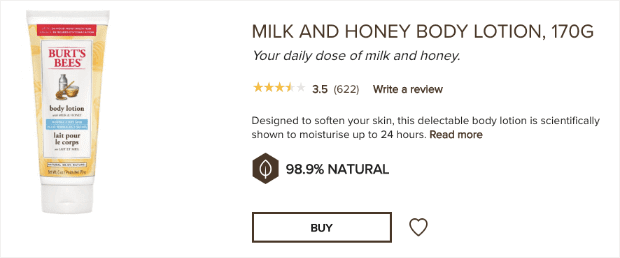
They also offer their customers the ability to get some insight into their values each year through their “Sustainability Goals.”
In 2018, they released their goals for 2020, which not only shares what they hope to accomplish but also highlights areas they need to improve.
Again, the level of honesty in the report serves to build trust with consumers and can be best summed up by Burt’s Bees’ general manager, Matt Gregory:

This announcement is just another reminder that building an authentic brand doesn’t mean being perfect. It simply means being honest and continuously trying to do better.
Now that we’ve seen some real-life examples of authentic branding let’s map out exactly how you can build a brand that people trust.
How To Build Brand Authenticity When You’re Just Starting Out
Ok, so you’re just getting started with your company and trying to figure out what it means to be authentic. Here are 4 actionable tips you can take to build your brand in a way that communicates openness and honesty with your audience.
Create Strong, Clearly Defined Personal Values
Before you do anything, you need to have a clear vision of what your company’s values are. What are the things that you (or your company) believe in so much that they can’t be bought?
Google’s 10 core values show us how these can look. On the list, they have clearly defined values such as “focus on the user and all else follows” and “it’s best to do one thing really, really well.”
Then, under each brief statement, they outline a vision for what it means to uphold that value in detail:
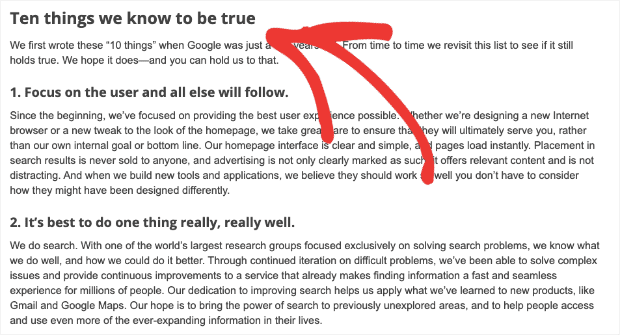
Your company may not have 10 core values to express, but it should have a few that you refuse to compromise. Once you’ve written down your values, you can begin crafting your product and your marketing strategies around them.
Build Mutually Communicative Relationships
When you’re building a relationship with someone in real life, would you do all the talking?
Of course not. That wouldn’t be a relationship.
The same goes for building relationships with your clients. You should share your values, but you should also take the time to listen to your customers’ stories.
You can do this in a lot of different ways:
- Invite clients to respond to your email campaigns
- Encourage comments and interactions on social media (be sure to reply)
- Have live chat features on your website for customer support
- Run campaigns that get customers involved (like Dove)
- Use a plugin like RafflePress to hold contests asking customers to share stories, pictures, of anecdotes about themselves.
Stepping back from the microphone and letting your users speak out has so many benefits, aside from the boost in user-generated content.
First, it builds the trust you need for brand authenticity. But it also allows you to learn more about your audience so you can create better content and provide more value to their lives.
For example, OptinMonster recently put out a video on getting results with influencer marketing. One viewer left a YouTube comment:

We’re so happy this user was comfortable enough to share some insight.
They gave a followup tip that added a lot of information to the video. It could have also inspired a whole new content piece centered around screening influencers before partnering with them.
Again, brand authenticity requires open communication. You can build authenticity for your brand much faster if that communication works both ways.
Use Your Values to Drive Your Words and Products
One of the worst things you can do is be inconsistent with your brand’s communication. This happens when a company’s values say one thing, but their product or advertisements show another.
One example of this occurred with the popular makeup brand Estée Lauder in 2018. Estée Lauder is vocal about their dedication to diversity, saying:
“We believe that diverse backgrounds, experiences, and perspectives result in greater innovation and better problem-solving across our organization.”

But when the cosmetics company released this ad campaign a couple of years ago, their company’s definition of “diversity” came under scrutiny:
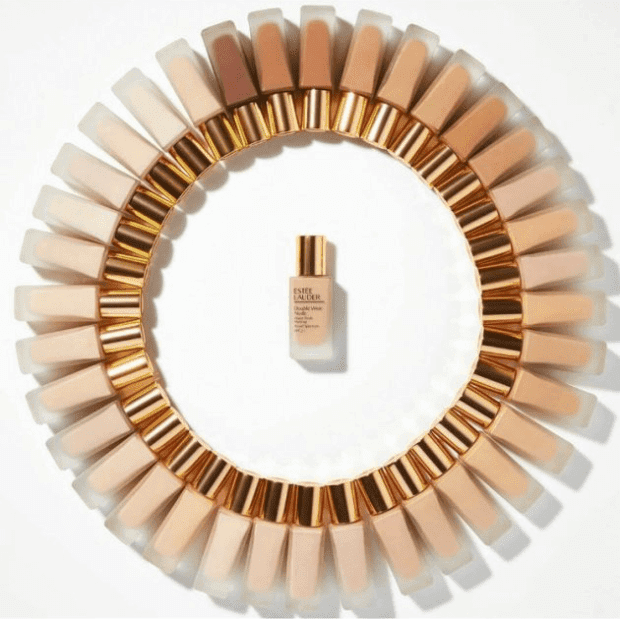
The makeup line didn’t leave many options for women of African American or Middle-Eastern descent. That left many consumers wondering how seriously the company took its values and, consequently, hurt the brand’s authenticity.
Once you clarify and define your internal values, make sure they’re a driving factor in everything you do. Post them on your website, hang them on your office walls, do anything to keep them always in view.
OptinMonster’s About Us page, for example, proudly displays our values:
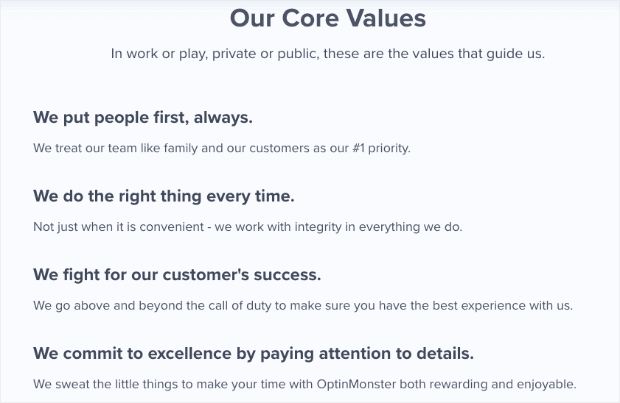
These values aren’t just for the customers. They are a daily reminder to our staff on what we expect, how hard we work for our clients, and how much pride we take in the work we do.
By making your values clear and more present in your own life, your product releases, marketing efforts, and customer interactions will live up to the values you proudly stand for.
Remember That Authentic Doesn’t Mean Perfect
In an ideal world, you and all your employees would never stray from your company’s internal values.
But, unfortunately, it’s not always an ideal world.
A company, just like a person, grows and evolves. As part of that process, they’re bound to make mistakes.
Maybe an employee says something inappropriate on social media. Perhaps you lost your cool and responded angrily to a mean comment online. Or maybe your brand values were flawed from the start.
Wherever you fall on that spectrum, it’s good to know that being authentic doesn’t mean being perfect. It does, however, mean taking responsibility.
Most of the time, when a brand makes a mistake, consumers are more than happy with a heartfelt apology.
The early days of Netflix make a great example of this. When Netflix first began, they had two services: DVD rentals (by mail) or online streaming. Initially, the pricing for both had been $10 per month.
But the CEO, Reed Hastings, decided to split the billing depending on service resulting in a big increase for users who wanted both ($8 for DVD rentals and $8 for streaming). As you can imagine, Netflix customers weren’t happy.
So what did the CEO do?
He took responsibility. Here are a few excerpts from his apology letter that show how the CEO isn’t afraid to admit he was wrong:

Hastings then went on to explain the reason for the price change and discuss the plan for Netflix’s future. The solution was to ultimately separate DVD rentals to a new company (owned by Netflix) called “Qwikster” and keep streaming services on Netflix.
As you know, that plan never fully worked out. But it’s safe to say that Netflix as a brand has fully recovered and is stronger than ever.
When It Comes to Authenticity, Honesty Is the Best Policy
Building an authentic brand means earning (and keeping) your customers’ trust. Once you’ve lost that trust, gaining it back can be a long, uphill battle.
That’s why we want to highlight one last aspect of building a successful brand that hits close to home for us:
Never rely on fake social proof.
Fake social proof is when companies decide to use false testimonials, paid-for reviews, or phony popups showing that other people have purchased a product. Unfortunately, this has become a fairly common practice, particularly with online reviews.
The problem is that most consumers are too smart for that strategy to work. They can tell a fake social proof signal from a mile away. Plus, with all the ways to build social proof authentically, it’s simply not necessary.
We at TrustPulse are committed to providing clients with a product that relies on genuine social proof to boost sales by up to 15%. Any time someone makes a positive action on your site, you can let other users know with a useful and subtle popup.
Here’s an example used by SeedProd:

Since most consumers struggle with a fear of missing out (FOMO), they’re more likely to purchase from your site when they see other people who have already done the same.
But no matter what social proof plugin you decide to use for your own business, we recommend only displaying real reviews, honest testimonials, and authentic purchases made from your site. Why?
You can never build an authentic brand with inauthentic strategies.
Interested in making the power of social proof start working to your advantage? Sign up for TrustPulse today and take your conversion rates to the next level!
